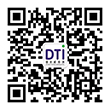How to apply for EU LFGB certification for kitchenware
Date:2025-07-21 10:32:16 Classification
:【question】 Visits:
Applications for EU LFGB certification testing for kitchenware need to clarify the product scope and follow the certification process
1. Clarify the product scope of LFGB certification for kitchenware
- The product scope of LFGB certification testing for kitchenware is wide, including but not limited to electric kettles, egg cookers, juicers, soy milk machines, spoons, shovels, bottle openers, egg beaters, cutting boards, fruit knives, kitchen knives and scissors, planes, blenders, etc. These products have direct or indirect contact with food during use, so they need to pass LFGB certification testing to ensure their safety.
2. Understand the basic requirements of LFGB certification
- LFGB certification is the EU's safety requirement for food contact materials, and is applicable to all materials and products that may come into contact with food, including kitchenware. Certification requires that products must meet certain safety standards and restrictions, such as not containing harmful substances and not affecting the taste and smell of food.
3. Determine the certification body and submit an application
- Enterprises need to choose a qualified certification body to apply for LFGB certification testing. When submitting an application, enterprises need to provide detailed information, instructions for use, materials list and other relevant information of the product. The certification body will make a preliminary assessment of the product based on these data and determine whether further testing is required.
4. Prepare samples and conduct tests
- According to the requirements of the certification body, the company needs to prepare a certain number of samples for testing. Test items include but are not limited to the detection of harmful substances, evaluation of food taste and odor, etc. The testing process will be strictly carried out in accordance with the standards and procedures of LFGB certification to ensure the accuracy and reliability of the results.
5. Review report and obtain certification
- After the test is completed, the certification body will issue a test report and review the report. If the product meets the requirements of LFGB certification, the certification body will issue a certification certificate to allow the product to be sold on the EU market. Enterprises need to pay attention to the validity period of the certification certificate and apply for renewal before the certificate expires.
6. Pay attention to certification standard updates and regulatory changes
- The standards and regulations for LFGB certification may be updated with time and technological advancement. Enterprises need to pay close attention to the updates of certification standards and changes in regulations, and adjust the design and production processes of products in a timely manner to ensure that the products always meet the requirements of LFGB certification.
7. Strengthen product quality control and safety management
- Obtaining LFGB certification is only one of the basic conditions for products to enter the EU market. Enterprises also need to strengthen product quality control and safety management to ensure that products meet safety standards and regulatory requirements throughout their life cycle. This includes strict control of every link from raw material procurement, production process control to product packaging and transportation.
8. Use certification to enhance product market competitiveness
- LFGB certification is one of the important passes for products to enter the EU market. Obtaining certification can enhance the market competitiveness of products and increase consumers' trust in and willingness to buy products. Enterprises can use the certification mark as one of the important contents of product publicity and promotion to attract more consumers' attention and purchase.




 Shen Gongwang Security: 44030602006947
Shen Gongwang Security: 44030602006947